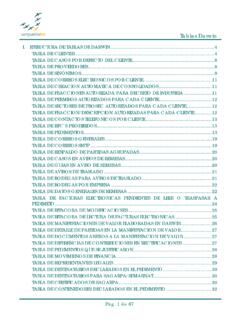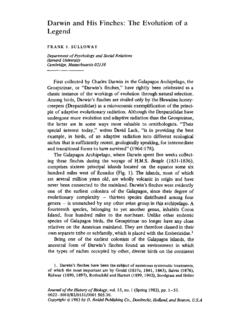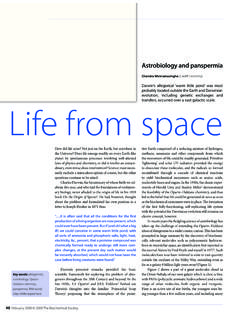Transcription of Biting Midge Pest Calendar for the Coastal Top …
1 Biting Midge Pest Calendar for the Coastal Top End NT 2015 Culicoides ornatus Medical Entomology Centre for Disease Control Department of Health Northern Territory Government See Page 1 of 8 Department of Health is a Smoke Free Workplace Biting Midge Pest Periods in the Coastal Top End of the NT. Biting midges There are a number of marine Biting Midge pest species around the coast of the NT, and they can be appreciable pests in or close to their particular breeding sites. The mangrove Biting Midge , Culicoides ornatus, causes the greatest pest problems around the coast of northern Australia.
2 Areas mostly affected are extensive Coastal and tidal river mangrove areas and adjacent areas up to 2km inland from the landward margin of mangrove areas. Breeding sites of the mangrove Biting Midge Primary breeding sites are in the upper neap tide level on the mud banks of the upper reaches of small tidal creeks, from downstream and up to the creek line where the canopy closes over. The prime breeding sites are associated with mud and Rhizophora and Avicennia mangrove pneumatophores. The more of these small mangrove creeks in an area (eg dendrite patterns of creeks), the more area of prime Biting Midge breeding, and the greater potential for severe pest problems.
3 Minor wet season breeding sites exist in the back of the creek bank in the Bruguiera/Ceriops mangrove zone. Less productive breeding sites include the muddy foreshore areas with wide and extensive areas of the woodland mangrove species Sonneratia alba present. These Sonneratia breeding sites can pose a minor pest problem starting 2 to 3 days earlier than the main pest periods indicated in this pest Calendar . Sandy foreshore areas with fringing mangroves are not appreciable breeding sites of the mangrove Biting Midge but can be sources of other Biting Midge species.
4 Local problem sites in Darwin The mangrove Biting Midge may be a nuisance all around the NT coast within 2 kilometres of extensive areas of Coastal mangroves containing numerous small feeder creeks. Mangrove creeks and areas in Darwin and Palmerston that can have Midge activity include: Mangrove areas within 1 km of Sadgrove Creek including the Winnellie industrial area and Bayview Haven locality, Reichardt Creek, Hudson Creek, around the lower areas of Berrimah including the Railway terminal and East Arm wharf, Elizabeth River from Wickham Point to Virginia including near Palmerston, the mouth of Buffalo Creek, the Lee Point and Muirhead lower fringe areas (high Midge activity) and Middle Arm from Channel Island to Berry Springs.
5 Palmerston rural residential areas within 1 km of harbour fronting mangroves (high Midge activity), including the Marlow Lagoon area and near the Archer ovals. Within 500 m of the lowest reaches of Rapid Creek and Ludmilla Creek (moderate Midge activity). Suburban border areas of the Palmerston suburbs of Durack, Driver, Moulden, Archer, and Bellamack (moderate Midge activity). Page 2 of 8 Department of Health is a Smoke Free Workplace DEPA RTMENT OFHEALTH Sonneratia mangrove areas with muddy substrates that can pose minor pest problems include: Doctors Gully foreshore areas Mouth of Sadgrove Creek East Point north east end to mouth of Ludmilla Creek Seasonal occurrence Mangrove Biting Midge abundance varies greatly during the month, with highest numbers occurring 3 days either side of the full moon and to a lesser extent 3 days either side of the new moon.
6 Mangrove Biting Midge numbers also vary during the year with relatively low numbers during the wet season, an increase from April to July, and highest numbers occurring between August and December. The increase in numbers coincides with the increase in the highest tide levels each month from the mid to late dry season. Biting Midge numbers Biting Midge numbers exceeding 1,000 C. ornatus in one CO2 baited EVS trap per night is considered a high pest problem, with numbers exceeding 5,000 per trap night indicating a severe pest problem.
7 High primary peaks of Biting midges can be expected between August and December around the full moon, with average numbers within 2km of extensive areas of mangroves with primary breeding sites of 15,000 to 25,000 per trap night, and high secondary peaks of 5,000 to 15,000 around the new moon. Moderate primary peaks of 1,000 to 5,000 can be expected between January and July around the full moon, and moderate secondary peaks of 300 to 1,000 around the new moon. Areas of mangroves with less prime breeding sites will experience lower pest levels.
8 Biting Midge bites Biting midges do not transmit diseases to humans in Australia but scratching of the bites may lead to secondary bacterial infection. Culicoides ornatus bite in the highest numbers in the 2 hour period before and after sunrise, and the 2 hour period before and after sunset. However, bites can also occur at other times and during the day in or adjacent to their primary breeding sites. Self protection Personal protection, such as full-length trousers, long sleeved shirts, socks and shoes, and the use of insect repellents containing DEET or Picaridin will generally be required within 2 km of their prime breeding sites.
9 The precaution and application advice on product labels should be followed, as some repellents are not recommended for young children. Protection can also be obtained with the use of insecticide pad products such as mosquito lanterns or thermocells or electric plug in devices, which are heated and create a relatively narrow protective zone. Barrier sprays near outdoor patio or recreation areas of bifenthrin sprayed on screening Page 3 of 8 Department of Health is a Smoke Free Workplace DEPA RTMENT OFHEALTH shrubs and external walls and fences up to 2m high can offer very good premise and yard protection for periods up to 6 weeks (Standfast et al.)
10 2003). Pest Calendar This Calendar shows periods when high numbers of C. ornatus are expected in the Darwin area in 2015 in relation to tides in Darwin Harbour and moon phases. Highest numbers will start 2-3 days before the full/new moon and last until 2-3 days after the full/new moon. Pest periods will occur in other areas around the NT coast at the same periods. The period of least C. ornatus Biting activity is in the 9 to 4 days preceding full or new moons. References Standfast H., Fanning I., Maloney L,. Purdie D.




